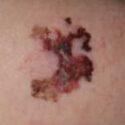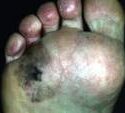
24 May Weill Cornell Dermatologist Discusses Skin Cancer Prevention and Detection
MedicalResearch.com Interview with:

Dr. Alexis
Andrew F. Alexis, MD, MPH
Vice-Chair for Diversity and Inclusion
Department of Dermatology
Dermatologist
Center for Diverse Skin Complexions
Weill Cornell Medicine – NY
MedicalResearch.com: What are the main types of skin cancer? Is the incidence changing?
Response: The 3 main types of skin cancer are melanoma, squamous cell carcinoma (SCC) and basal cell carcinoma (BCC). Skin cancer is the most common cancer in the United States1 and 1 in 5 Americans will develop skin cancer in their lifetime. (2)
The overall incidence has changed as follows:
• Melanoma: Rates doubled over past 30 years from 1982 to 2011.3 It differs by age group.
o Adolescents and adults age 30 and younger: incidence rate is declining
o Older age groups (e.g. 80 and older): incidence rate is increasing
• Squamous Cell Cancer:
o Incidence increased 263% between 1976-1984 and 2000-20104
• Basal Cell Cancer:
o Incidence increased 145% between 1976-1984 and 2000-20104
MedicalResearch.com: Does melanoma present differently in different populations?

One example of melanoma from DermNet NZ
Response: Yes, melanoma can present differently in different populations. For instance, the incidence of skin cancer among non-Hispanic whites is 30x higher than amongst non-Hispanic Black or Asian/Pacific Islander individuals. (5)

One example of melanoma of sole of foot DermNetNZ image
Patients with darker skin tones can still get skin cancer but often diagnosed at later stages, have lower survival rates, and are often in areas less commonly exposed to the sun such as the palms of hands, soles of feet, groin, inside of the mouth, and nails. (6)
In patients with lighter skin, melanoma is more commonly found on sun-exposed areas like the back and legs.
MedicalResearch.com Editor’s note: Note all melanomas present with typical features. Please have any new, changing or worrisome growths evaluated by your health care provider.
MedicalResearch.com: How has the management of melanoma changed over the years?
Response: The management of melanoma has evolved with advancements in early detection, surgical techniques, and development of targeted therapies and immunotherapies. These treatments have improved survival rates and quality of life for patients with advanced melanoma.
Targeted therapies, such as drugs that target the mutation in the BRAF gene, attack cancer cells while minimizing damage to healthy cells.
Immune check point inhibitors, such as ipilimumab and nivolumab, enhance the body’s own immune system response to cancer.
Overall, median survival has improved from approximately 6 months to nearly 6 years for patients with advanced inoperable stage IV disease due to the use of immunotherapy. (7)
MedicalResearch.com: Who should be screened for skin cancer?
Response: Everybody should perform regular skin self-exams, especially in patients with increased risk such as individuals with a personal or family history of skin cancer, excess UV exposure, numerous moles, or fair skin.
Dermatologists also perform regular skin exams to screen for skin cancer and individuals can work with a dermatologist to determine the frequency of such exams based on risk factors such as skin type, family history, and amount of sun exposure.
MedicalResearch.com: What can individuals do to decrease their risk of skin cancer?
Response: Individuals can decrease their risk of skin cancer through a multipronged approach of not only wearing sunscreen, but also being aware of the following:
-Wearing water-resistant, broad-spectrum (UVA and UVB) sunscreen with an SPF of 30 or higher
-Seeking shade especially between the hours of 10 a.m. and 2 p.m.
-Wearing sun-protective clothing
-Awareness of increased chances of sunburn around water, snow, and sand due to reflective properties
-Avoiding tanning beds
MedicalResearch.com: Is there anything else you would like to add?
Response: It’s important to raise awareness about skin cancer prevention and the significant of early detection. Regular skin checks and protective measures are crucial in addressing the rising incidence of skin cancer.
References:
1.Guy GP, Machlin SR, Ekwueme DU, Yabroff KR. Prevalence and costs of skin cancer treatment in the U.S., 2002-2006 and 2007-2011. Am J Prev Med. 2015;48(2):183-187. doi:10.1016/j.amepre.2014.08.036
2.Stern RS. Prevalence of a history of skin cancer in 2007: results of an incidence-based model. Arch Dermatol. 2010;146(3):279-282. doi:10.1001/archdermatol.2010.4
3.Siegel RL, Miller KD, Fuchs HE, Jemal A. Cancer statistics, 2022. CA Cancer J Clin. 2022;72(1):7-33. doi:10.3322/caac.21708
4.Muzic JG, Schmitt AR, Wright AC, et al. Incidence and Trends of Basal Cell Carcinoma and Cutaneous Squamous Cell Carcinoma: A Population-Based Study in Olmsted County, Minnesota, 2000 to 2010. Mayo Clin Proc. 2017;92(6):890-898. doi:10.1016/j.mayocp.2017.02.015
5.Cancer Facts & Figures 2022. Accessed May 22, 2024. https://www.cancer.org/research/cancer-facts-statistics/all-cancer-facts-figures/cancer-facts-figures-2022.html
6.SEERExplorer Application. Accessed May 22, 2024.
7.Knight A, Karapetyan L, Kirkwood JM. Immunotherapy in Melanoma: Recent Advances and Future Directions. Cancers. 2023;15(4):1106. doi:10.3390/cancers15041106
The information on MedicalResearch.com is provided for educational purposes only, and is in no way intended to diagnose, cure, or treat any medical or other condition. Always seek the advice of your physician or other qualified health and ask your doctor any questions you may have regarding a medical condition. In addition to all other limitations and disclaimers in this agreement, service provider and its third party providers disclaim any liability or loss in connection with the content provided on this website.
Last Updated on May 24, 2024 by Marie Benz MD FAAD
